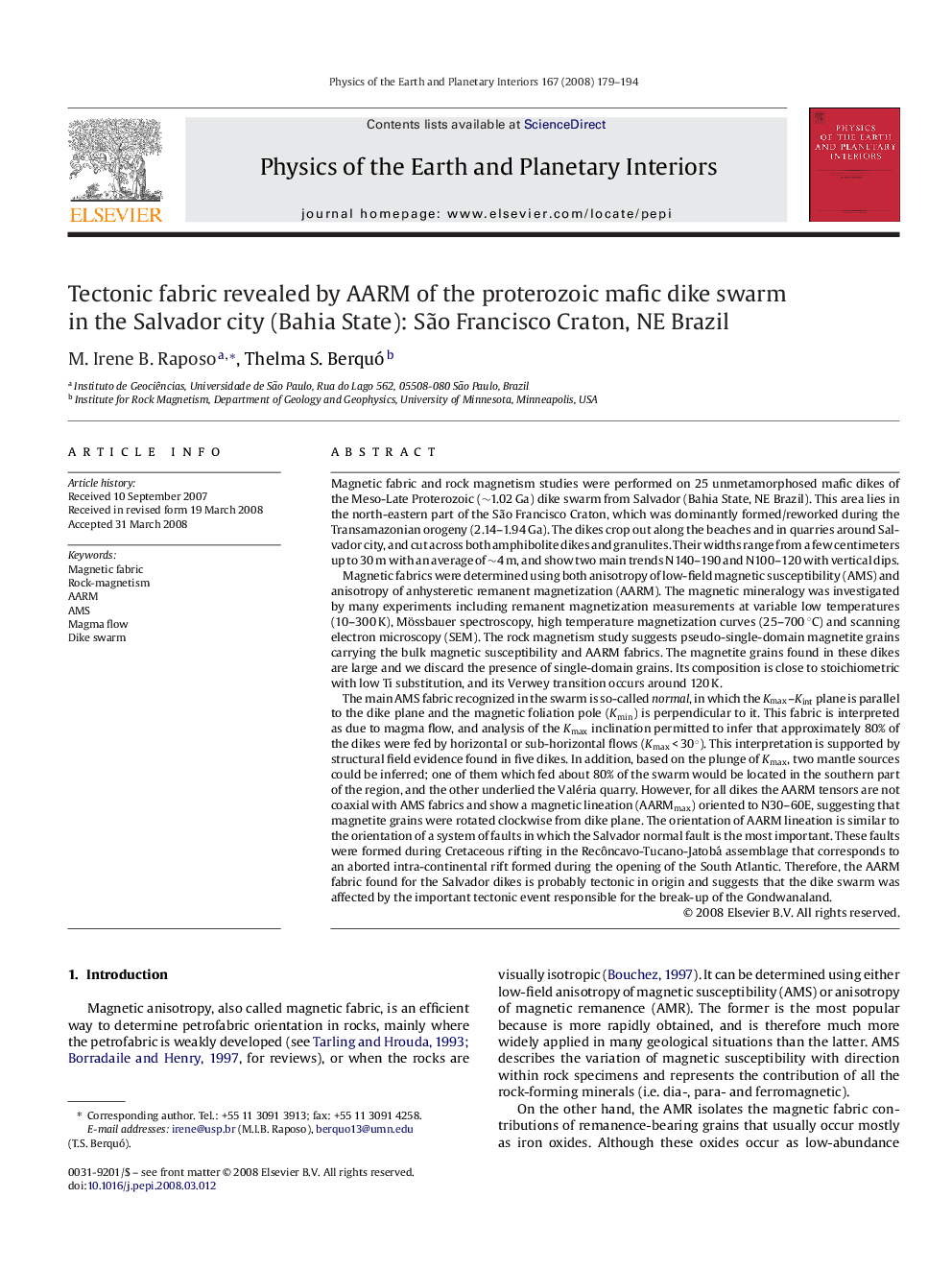| کد مقاله | کد نشریه | سال انتشار | مقاله انگلیسی | نسخه تمام متن |
|---|---|---|---|---|
| 4742442 | 1641581 | 2008 | 16 صفحه PDF | دانلود رایگان |

Magnetic fabric and rock magnetism studies were performed on 25 unmetamorphosed mafic dikes of the Meso-Late Proterozoic (∼1.02 Ga) dike swarm from Salvador (Bahia State, NE Brazil). This area lies in the north-eastern part of the São Francisco Craton, which was dominantly formed/reworked during the Transamazonian orogeny (2.14–1.94 Ga). The dikes crop out along the beaches and in quarries around Salvador city, and cut across both amphibolite dikes and granulites. Their widths range from a few centimeters up to 30 m with an average of ∼4 m, and show two main trends N140–190 and N100–120 with vertical dips.Magnetic fabrics were determined using both anisotropy of low-field magnetic susceptibility (AMS) and anisotropy of anhysteretic remanent magnetization (AARM). The magnetic mineralogy was investigated by many experiments including remanent magnetization measurements at variable low temperatures (10–300 K), Mössbauer spectroscopy, high temperature magnetization curves (25–700 °C) and scanning electron microscopy (SEM). The rock magnetism study suggests pseudo-single-domain magnetite grains carrying the bulk magnetic susceptibility and AARM fabrics. The magnetite grains found in these dikes are large and we discard the presence of single-domain grains. Its composition is close to stoichiometric with low Ti substitution, and its Verwey transition occurs around 120 K.The main AMS fabric recognized in the swarm is so-called normal, in which the Kmax–Kint plane is parallel to the dike plane and the magnetic foliation pole (Kmin) is perpendicular to it. This fabric is interpreted as due to magma flow, and analysis of the Kmax inclination permitted to infer that approximately 80% of the dikes were fed by horizontal or sub-horizontal flows (Kmax < 30°). This interpretation is supported by structural field evidence found in five dikes. In addition, based on the plunge of Kmax, two mantle sources could be inferred; one of them which fed about 80% of the swarm would be located in the southern part of the region, and the other underlied the Valéria quarry. However, for all dikes the AARM tensors are not coaxial with AMS fabrics and show a magnetic lineation (AARMmax) oriented to N30–60E, suggesting that magnetite grains were rotated clockwise from dike plane. The orientation of AARM lineation is similar to the orientation of a system of faults in which the Salvador normal fault is the most important. These faults were formed during Cretaceous rifting in the Recôncavo-Tucano-Jatobá assemblage that corresponds to an aborted intra-continental rift formed during the opening of the South Atlantic. Therefore, the AARM fabric found for the Salvador dikes is probably tectonic in origin and suggests that the dike swarm was affected by the important tectonic event responsible for the break-up of the Gondwanaland.
Journal: Physics of the Earth and Planetary Interiors - Volume 167, Issues 3–4, April 2008, Pages 179–194